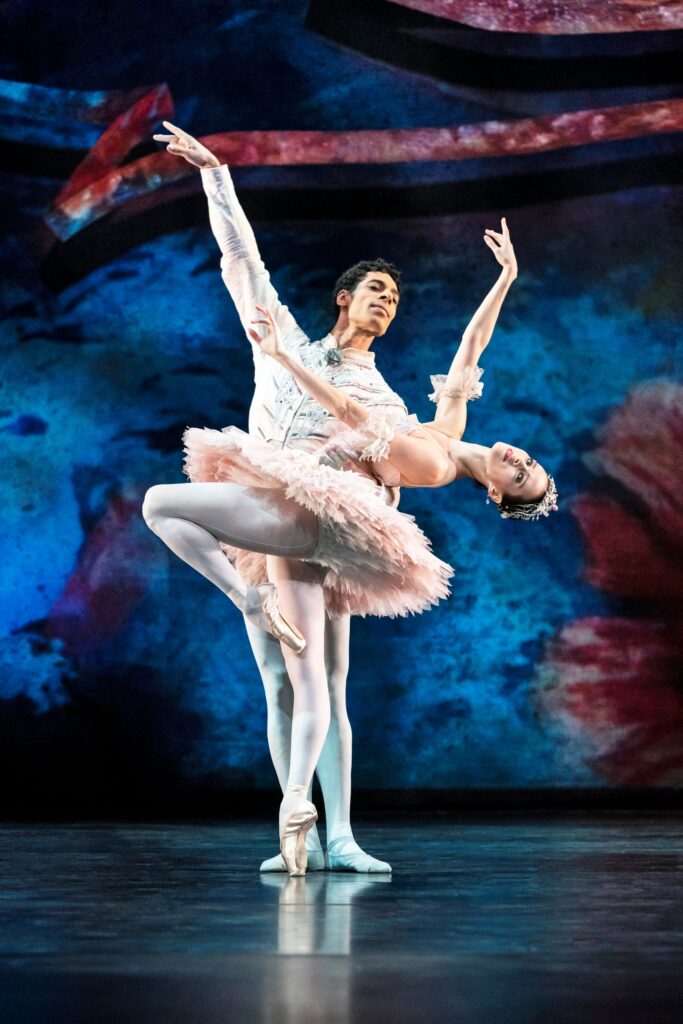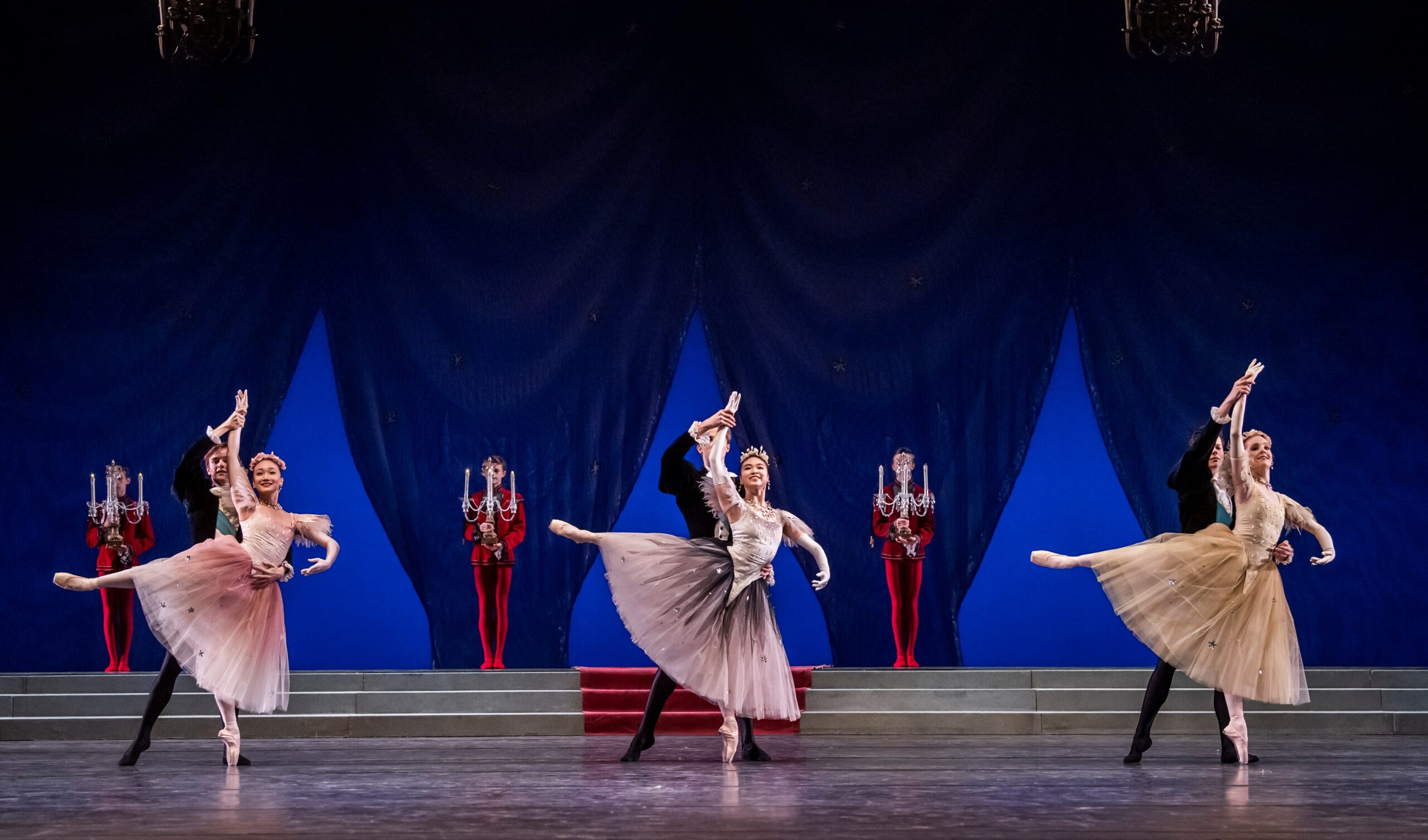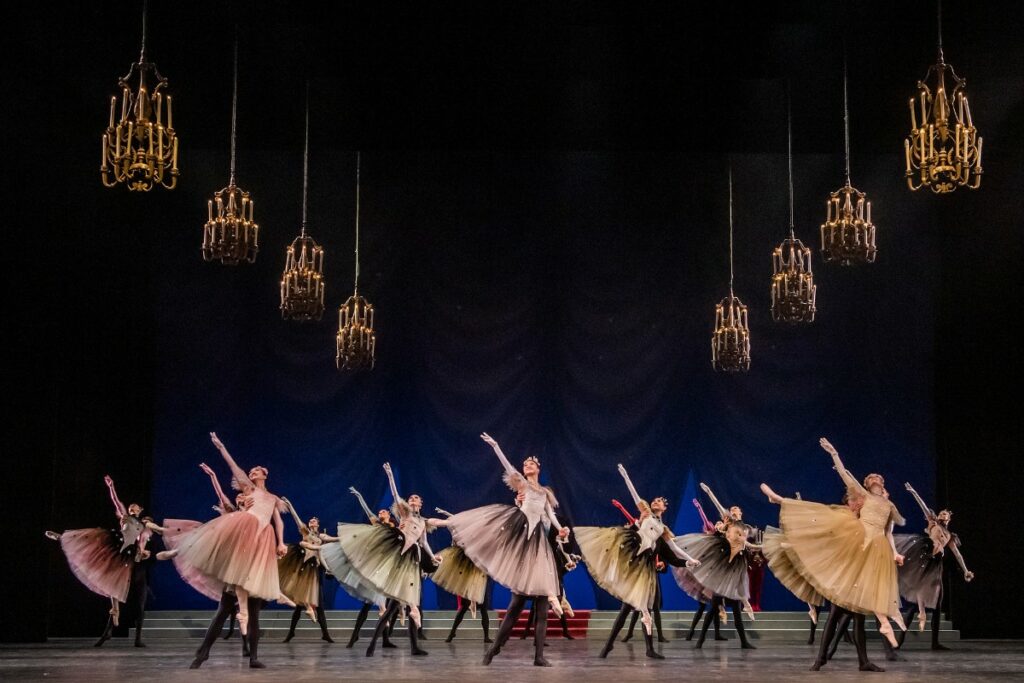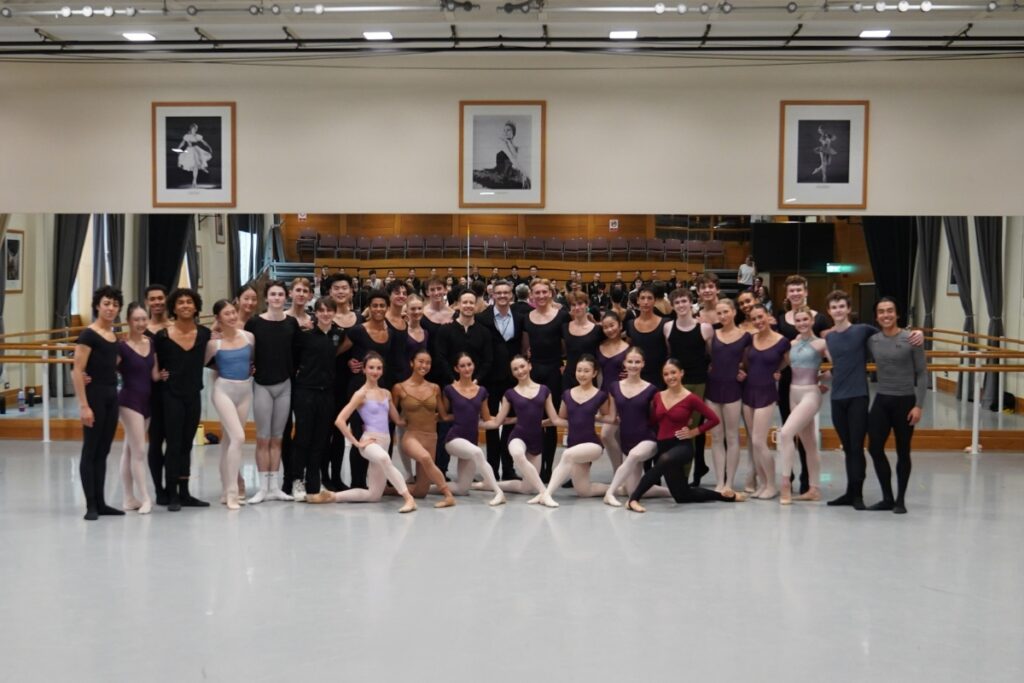Behind Frederick Ashton’s La Valse with Samara Downs
Upper School students will perform Frederick Ashton’s captivating La Valse in our upcoming 2024 Summer Performances at Opera Holland Park and the Royal Opera House.
Set in 19th-century Imperial Vienna to Maurice Ravel’s powerful score, La Valse features a large cast of dancers in ball gowns and tailcoats swirling around an elegant ballroom.
Samara Downs, current Principal with Birmingham Royal Ballet, Benesh Movement Notator and alumna of the School, has been working on the piece with 1st, 2nd, and Pre-professional Year students.
Ahead of the upcoming performances, Samara shared her insights into Ashton’s elegant piece and the choreology process.
Can you tell me about your background as a dancer and choreologist?
I progressed all the way through The Royal Ballet School, from White Lodge to the Upper School and then graduated into the Birmingham Royal Ballet. I rose through the ranks and was promoted to Principal in 2016.
Having completed a Diploma in Dance Pedagogy some years ago, I wanted to turn my attention to learning Benesh Movement Notion since it has always fascinated me. I progressed through Benesh International’s excellent distance learning Professional Award and am now finishing off my Post-graduate Diploma in Benesh Movement Notation under the incredible tutorage of Diana Curry, who was herself, amongst many other things, a choreologist with The Royal Ballet working with many of the choreographic greats.
In this time, I have been lucky enough to be involved in some truly fascinating projects, including having the pleasure of working with the Frederick Ashton Foundation to revive some of Ashton’s work through the creation of a Benesh Movement Notation score to sit alongside the archive video, as well as a reconstruction entirely from the notation that I did for Ballade by Kenneth MacMillan. This piece hadn’t been seen since the 1970s, and for which no video existed. It was incredibly rewarding to bring the ballet back to life, and quite amazing that the ballet was preserved through the efforts of the choreologist Jacquie Hollander, who recorded it live from rehearsals at the time. London City Ballet are now due to perform Ballade in their upcoming season.


Samara performing Sugar Plum Fairy in The Nutcracker (left) and Swanhilda in Coppélia (right)
What led you to become a Benesh Movement Notator?
I’ve worked with Benesh Movement Notators my whole career, so I’ve always seen the advantages that reading Benesh can bring to preserving the intention of a work and bringing it back to life, whether one has danced it and knows it intimately or not.
I’ve always been fascinated by the language and its ability to provide a level of efficiency in conveying a truly vast amount of detail and adaptability to record a huge array of movement styles.
I find it a great comfort when I’m teaching to have the Benesh Movement Notation score to refer to since the work that goes into writing a score involves a deep level of analysis, which is then ready to tap into when needed. Referring to this alongside videos of a ballet gives a full picture of the intention of a piece, rather than just relying on a video, which is essentially a snapshot of one interpretation in a given performance. It helps me feel that I have all the information available to me to do the best job I can.
Have you performed La Valse before?
While I have been lucky enough to perform many of Ashton’s masterpieces, I have never performed La Valse, so it has been lovely to work with Ricardo Cervera, who has. It has been fascinating to examine variations in interpretations and the potential reasons for any changes to the steps together, whilst bearing in mind what will work best for the students. This has brought together Ricardo’s direct experience of performing it with Benesh Movement Notation’s ability to record the wider interpretation, giving us a holistic approach to staging the work.
It’s been wonderful getting to know this iconic piece of repertoire.

Royal Ballet School students performing La Valse in 2019 at the Royal Opera House.
Can you tell me about the piece and what audiences can expect?
It’s 14 minutes long, and is a whirlwind of lush movement and interconnecting patterns, with 18 corps de ballet couples and three principal couples. Whilst it’s a relatively short piece, it’s grand in scale with a big cast and romantic, elegant choreography set to an absolutely stunning bit of Ravel. As you’d expect of Ashton, it’s an extremely musical interpretation of Ravel’s score.
The music has been described as ‘a metaphor for the predicament of European civilization in the aftermath of the Great War, with its one-movement design plotting the birth, decay and destruction of a musical genre: the waltz’. While Ravel himself denied any such analogy, certainly the gradual emergence of the dancers through the mist matches the fragmented nature of the score, which gradually establishes into a whirlwind of movement, grandeur and elegant waltzing, with a climatic, tumultuous finale that pushes the dancers to their aerobic limits!
How has it been working with the students on the piece?
They’re wonderful. We put the piece together in only a week of afternoon rehearsals, so the students’ high level of concentration has enabled that to materialize.
I have been working across all three year groups, and it’s been wonderful to see the emerging talent coming through the School. One of the lovely things about being in the Company for the length of time that I have is that I get to see the talent from the School emerge and develop and see students flourish into wonderful artists in their own right.

Students rehearsing La Valse in the studio with Samara
How important is it for students to have exposure to ballets like this?
Yes, it is huge because they’re seminal to students’ progression as artists, and the broader spectrum of repertoire they get exposed to at this stage can shape what type of repertoire/ company students want to graduate into and how they want to progress when they get into a company.
The students are lucky to learn a broad range of work, and La Valse falls under the core neoclassical work that is the mainstay of modern ballet in this country. It’s important for them to experience the ‘English style’ and the lyrical fluidity, quick footwork, and whole-body mobility that are a Hallmark of Ashton’s work. Experience of which at this stage will help to build coordinated, musical, and fluid dancers of the future.
Often, the opportunity to perform repertoire like this also gives you the chance to put into practice everyday feedback that you might get in class or coaching and can make it ‘click’ into place and consolidate that learning. It allows you to develop both as a technician and as an artist and build stagecraft, which is vital to rely on when things don’t go to plan!
How would you describe the piece in three words?
Elegant, decadent and lyrical.
Purchase tickets to see La Valse on stage at Opera Holland Park and the Royal Opera House.





